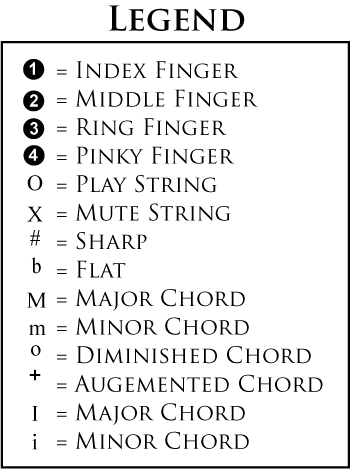Guitar Tips and Techniques
Getting Started: Accessibility
Once you get your new guitar home, you should carve out a spot in your room for your guitar and amp (if you play electric). If your gear is not readily accessible it can be a hindrance to practice, and practice is essential if you want to become a proficient player. If you can buy a guitar stand that's ideal, they're relatively inexpensive depending on the type. Most of the time you can find them on sale for around $10.00 or $15.00. You need to be able to pick up your guitar whenever the mood hits you without fiddling with your case and scrambling for chords. Leave your guitar out on your stand and leave it plugged in to your amp (if you don't need to worry about tripping over the chord). This way, all you do is flip on the power and you're ready to rock.
Training your Hands to Form Chords
Use the tips of your fingers to form the chord. Press toward the fret, not in the middle. Strum only the strings designated to be played for each chord. Make sure the strings are firmly pressed against the Frets and that your fingers are not muting adjacent strings. Chording is difficult for nearly everyone at first. You have to train the muscles in your hands and forearms to know these chords so that you can form them without thinking. Practice, Practice, Practice!
Learn a few Open Chords like E Major, A Major, G Major and D Major first, and practice changing between them over and over again until you’re comfortable. Learn some more Open Chords. Then, move on to Barre Chords. Practice!
Lear your Major Scales and then move on the the Minor Scales. Practicing Major and Minor scales, especially with a metronome, is a great way to build strength in your hands and forearms and is also fantastic for your finger dexterity.
The number of hours you spend practicing your scales and chords will directly affect how fast you learn. Use the Legend below for the charts and visual aids used on this site.
Buy a Metronome
A metronome is an essential practice tool for any instrument. Even when you're just starting out, the metronome will help you develop an inner rhythm and the ability to feel the beat. There are wind-up mechanical metronomes that produce a click which work well for acoustic guitars, but can be difficult to hear if you're learning on electric. Other models are battery operated and their volumes can be adjusted. Perhaps best of all are the software versions. With computer software you can practice to a cymbal beat, a snare, toms or even the whole drum kit. If you use Pro Tools, Acid Pro, Sonar, or any of the recording software suites you can use them to play the drum beats while you play along on the guitar.
Practice Your Scales!
Metronomes are especially helpful when practicing scales. When you're first beginning, you'll need to set the speed very low so that you can cleanly play each note. You should tap your foot along with the metronome. Play one note for each click of the metronome. When you can go up the scale and then down the scale cleanly, move the metronome's speed up one notch. Repeat that procedure, gradually getting faster until you've reached the desired tempo. If you can't play something slow, then you can't play it fast!

